“Marla Bendini” is a transgender visual and performance
artist, club personality, musician, pole and aerial artist based in Singapore.
Her trans identity and practice are profoundly interrelated. She created her
persona in 2007 as an amalgamation between art and life, to explore multiple
liminal identities and fluidity in perspectives. It was also to explore how the
trans body allows one to occupy a new artistic space and challenge current understandings
of identity.
Throughout this interview, my heart lurched and leapt as Marla shared generously. Before we kicked things off proper, we spent some time talking about the importance of sharing authentic connections and tuning in to one’s higher self. For our conversation, she discussed the practices of artists such as nor, Marylyn Tan, ila and Zarina Muhammad — all of whom are her friends and collaborative partners. Marla spoke about seeing and knowing with searing honesty — and it was clear that all of these experiences and trajectories have and will continue to coalesce into something much bigger and brighter.
Throughout this interview, my heart lurched and leapt as Marla shared generously. Before we kicked things off proper, we spent some time talking about the importance of sharing authentic connections and tuning in to one’s higher self. For our conversation, she discussed the practices of artists such as nor, Marylyn Tan, ila and Zarina Muhammad — all of whom are her friends and collaborative partners. Marla spoke about seeing and knowing with searing honesty — and it was clear that all of these experiences and trajectories have and will continue to coalesce into something much bigger and brighter.
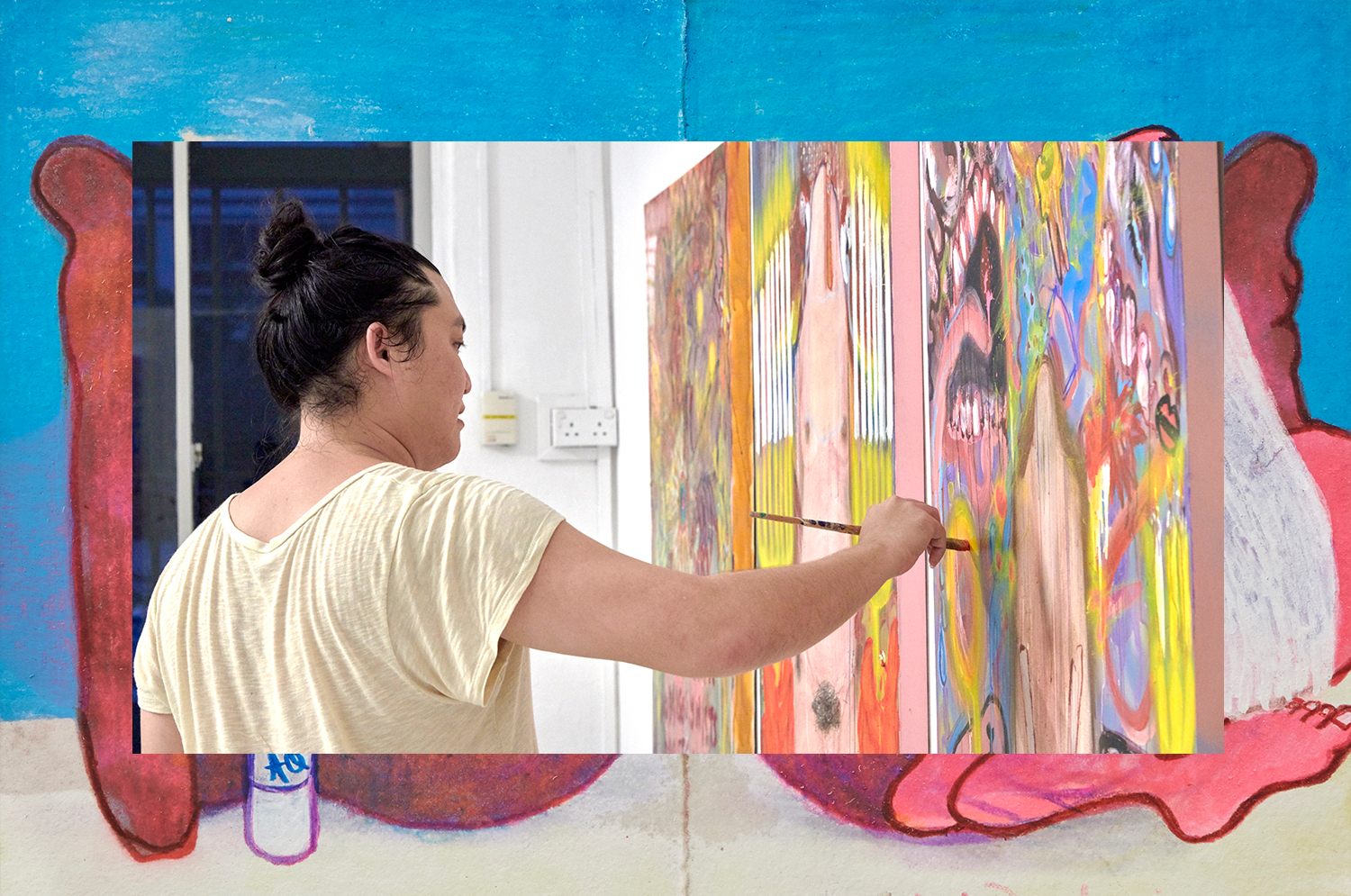
When you were putting together your selection for this interview, you said you wanted to highlight artists and their practices as compared to specific works. Could you talk us through how you put together this selection, and why you were more drawn towards considering these artists’ practice as a whole?
One of the problems I had with selecting artworks for this
interview was settling on one specific work. I think this stems from my own
practice as a multidisciplinary artist. When you just look at the final product, as compared to considering the entire process, it can
amplify a certain hierarchy in terms of aesthetics and presentation. Some artists
don’t even get to the stage where their art is presented. Even when art is
presented, some work might not even have a title and people might not even know it
exists. I know all of the artists that I’ve selected for this conversation personally. I see how they make work, we've made work together, and we've made work together even though the works are not always presented. It allows me to experience art in a more intimate and useful way, because it shows me and tells me why I’m making art.
I first met Marylyn Tan at a DIY art market, and she asked me if I wanted a henna tattoo. She drew an image of a vagina on my hand. It comes back to something I raised earlier. Do you consider pieces such as these artwork? Whether or not it gets presented or exhibited, it happened. I had a psychotic breakdown last year, and when I went into the hospital, I brought nothing with me. When Marylyn came to visit me, she brought in a sketchpad for me. When I flipped through the sketchpad, I noticed that there were five drawings already inside. I thought she had left them in there for me, but it turns out that those drawings were done a couple of years ago and it wasn’t intentional. This is how art speaks to me. It’s unintentional and unpredictable. There are always people rooting for you in the background, and sometimes you don’t even know who they are. They just drop things or hints that you need in that very moment. In times like these, things become incredibly clear and you just feel very loved. This is my connection with the artists I’ve chosen.
This is how art speaks to me. It’s unintentional and unpredictable.
In particular, I wanted to spend a little more time
discussing your relationship with Marylyn Tan, nor and their works. Both Marylyn and
nor are known for their incisive poetry and spoken word performances. What do
you enjoy about their work, and how do you see poetry weaving into
your own practice?
My practice started with the visual arts and painting, in
particular. When I came on the art scene, I realised quite early on that people
become more interested in the artwork when they are able to see you making it. Once
the artwork hangs on the wall, it becomes dead to me. I realised that people
were more interested in how I was making art and why I was making art.When I came on the art scene, I had just transitioned. This was in 2007, and I had my first official exhibition in 2010. As an artist, the first few years are about representation and getting yourself out there. It’s about making sure that you can be seen in a certain way. As a result of that, I became acquainted with performance art. Interestingly, I think performance art isn’t shown or exhibited as frequently now. I don’t know if this is due to the lack of funding and performance festivals. On the other hand, we see the spoken word scene coming up.
I’ve never been comfortable with performing spoken word, so I write a lot more. Even then, I find writing stressful. In terms of writing, I've never thought of my work as being good enough. I’ve found it difficult to submit or finish up my writing because I feel like once it’s set in stone, it’s going to stay that way forever. It’s a very unhealthy and negative habit of mine. With Marylyn, I know that she sometimes embodies certain character in order to write. That helps her a lot, and so she has different voices. That perspective helped me to hack my own creative process. I stopped using punctuation, and I just write in a stream of consciousness manner.
Coming back to performance, I started doing performance because I realised that people enjoyed the spectacle. It became a strategy for me, and I used it to get people’s attention. When I came onto the scene, I was known as a sexy fashionista who was androgynous, gender-fucking and provocative. I used as much of that to my advantage as possible. Of course, I enjoyed the attention as well. However, I experienced my fair share of backlash as well. The moment I stepped out of my house, I was putting myself out there. It became a free for all. Even though I seem quite fierce or ferocious, when I’m out there, I’m like a deer in hunting season. There’s nowhere for me to hide.
Spoken word and performance art are just ways to connect with the audience. When I do performance, I seldom talk. The performances that I’ve spoken up in are the performances that have gotten me into a lot of trouble. When I do speak up, it’s because shit gets real and there’s just no way for me to express it purely through the physical. You almost have to literally cut yourself and bleed in order to show people that you’re hurting. They can’t see how they’re hurting you, so it’s almost as if you have to hurt yourself in order to show them and get them to perhaps understand the reality of the situation.
This probably brings me to nor and her practice. If you know nor, you know that she’s not a shy person. When we first met, she told me that my practice inspired her to become the artist that she is today. When you’re queer or gay, you’re the first queer or gay person you know. This was why I wanted to put myself out there — to give others permission to be themselves. I might not have gotten that permission myself, but as a queer person, it can sometimes seem like you need quite a bit of approval in order to get through life. Sometimes it comes down to having someone say that you’ve got this and that it’s going to be okay. Looking at nor and the way she makes works, I’m jealous. I can’t perform the way she does. I want to be nor sometimes, and she gives me life. It made me wonder how nor came to be, and nor herself has said that nor came to her in a dream. That’s how it happened for me as well.
¹ You Don’t Need Medication, You Just Need Affection, Marla Bendini
2020
² Yaya Papaya, Marla Bendini
2020
2020
² Yaya Papaya, Marla Bendini
2020
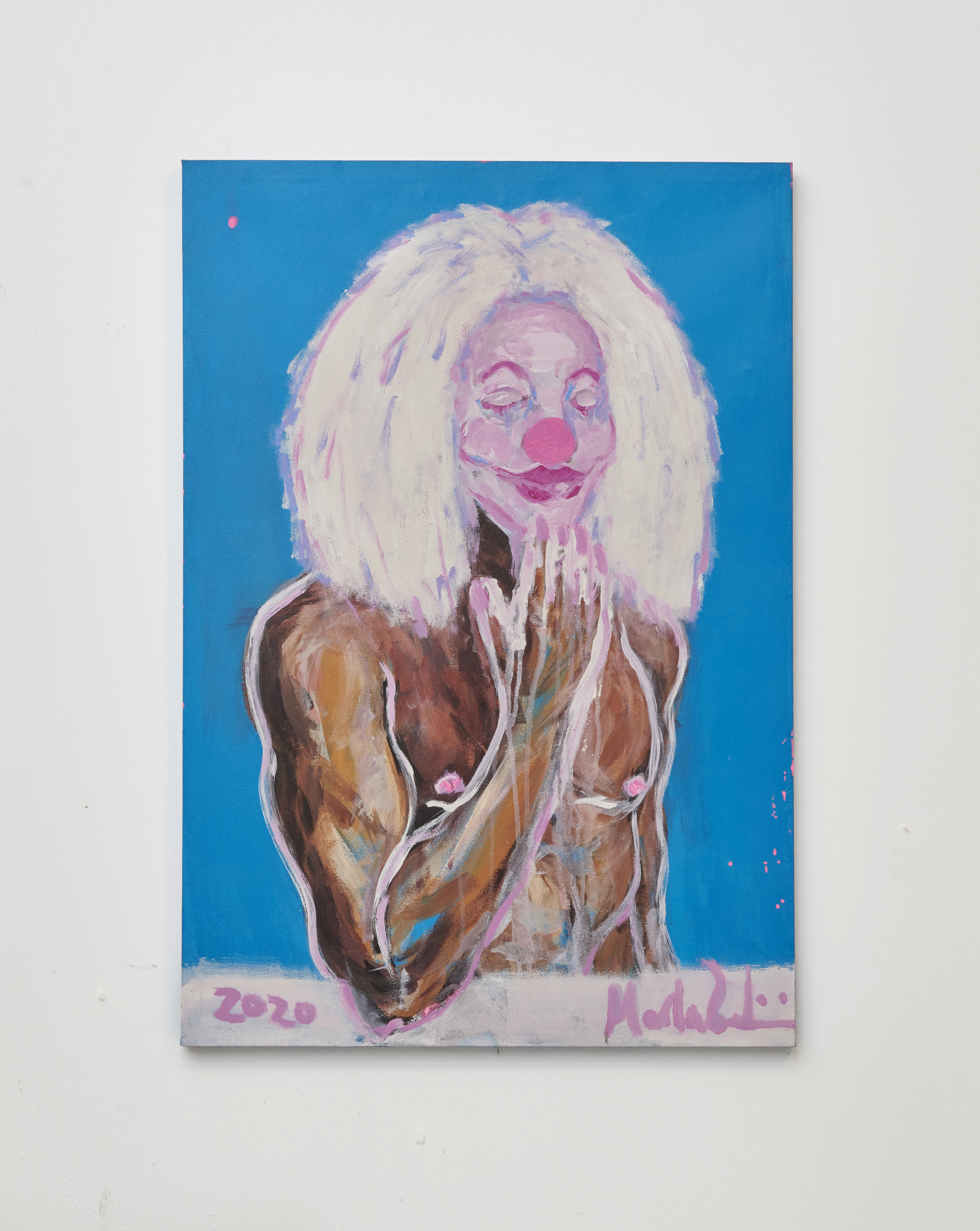

You work across so many disciplines — music, art,
performance, dance, and more. How would you describe your practice? Would it be
through the language of a maker (i.e. an artist, musician, or poet), through
the language of what you’re hoping to convey (i.e. an emotion, a state of
being, or an ideal), or something else entirely?
I’ve been an artist for ten years. For the first five years,
I thought I was doing okay but I really wasn’t. For the last five or six years,
I’ve been struggling with depression and addiction. I was working and doing my performances in
clubs because there were less restrictions
within such spaces. Outside of those spaces, you had to apply for the relevant
licenses from the various governing bodies in order to perform. On
these application forms, you have to declare if your work includes anything derogatory,
offensive, or if it promotes an alternative lifestyle. I check all of these boxes,
and this is before I’ve even made the work. For someone like me, it puts
me in a very dangerous state of mind. I’d like to think that I’m a strong
person, but this is probably why I fell so hard. I normalised all of this
negativity and trauma, to the point where I didn’t know that I was getting
hurt. I didn’t know that I was suffering. I didn't know I was in pain. At the
end of the day, this was my job and this is who I am. Yet how do you make work in
an environment where your employers and your audiences are attacking you all
the time?It was difficult for me to make work over the past few years. Luckily, I managed to find ways to circumvent it. If I can’t do performance work with my body, I can make music. I didn’t want to perform in that way anymore because it was very damaging for me in many ways. I began making meditation music, and the first person who heard my music was my good friend, Ivan Tan. I had been hearing this ringing in my ears for a while, and I wanted to translate or channel that sound into a piece. At the end of the day, I want people to know that I don’t just make works by myself. I’m part of a network. I need people to help me with things such as taking photographs or documenting my works. There’s always an army of people behind an artist.
With Ivan’s encouragement, I started busking and playing the guzheng in public. It’s actually really difficult to get people’s attention when you play the guzheng outdoors, so I started playing more intuitive or experimental music. I look different, and I tend to stick out. Ivan would often come with me when I busk, and he’d just sit with me or stand nearby just for support. I usually busk in Bugis, and would make a couple of dollars a night. I’d leave my guzheng at the Independent Archive. The artist, Lee Wen, stayed at the Independent Archive. At that time, he was suffering from Parkinson’s and so I’d play the guzheng for him as well.
³ G-OD, Marla Bendini
2020
⁴ Tooth Fairy, Marla Bendini
2020
2020
⁴ Tooth Fairy, Marla Bendini
2020
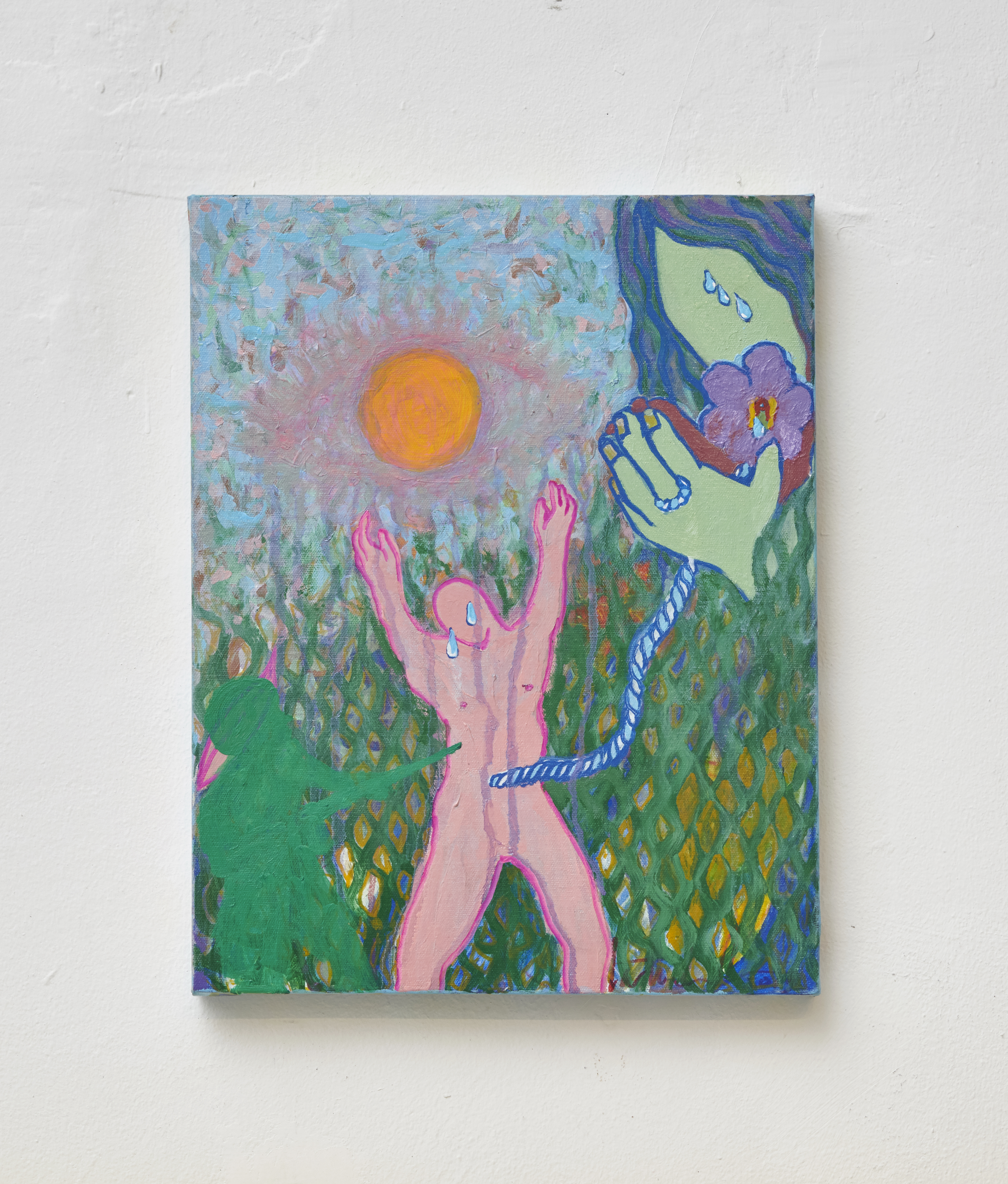
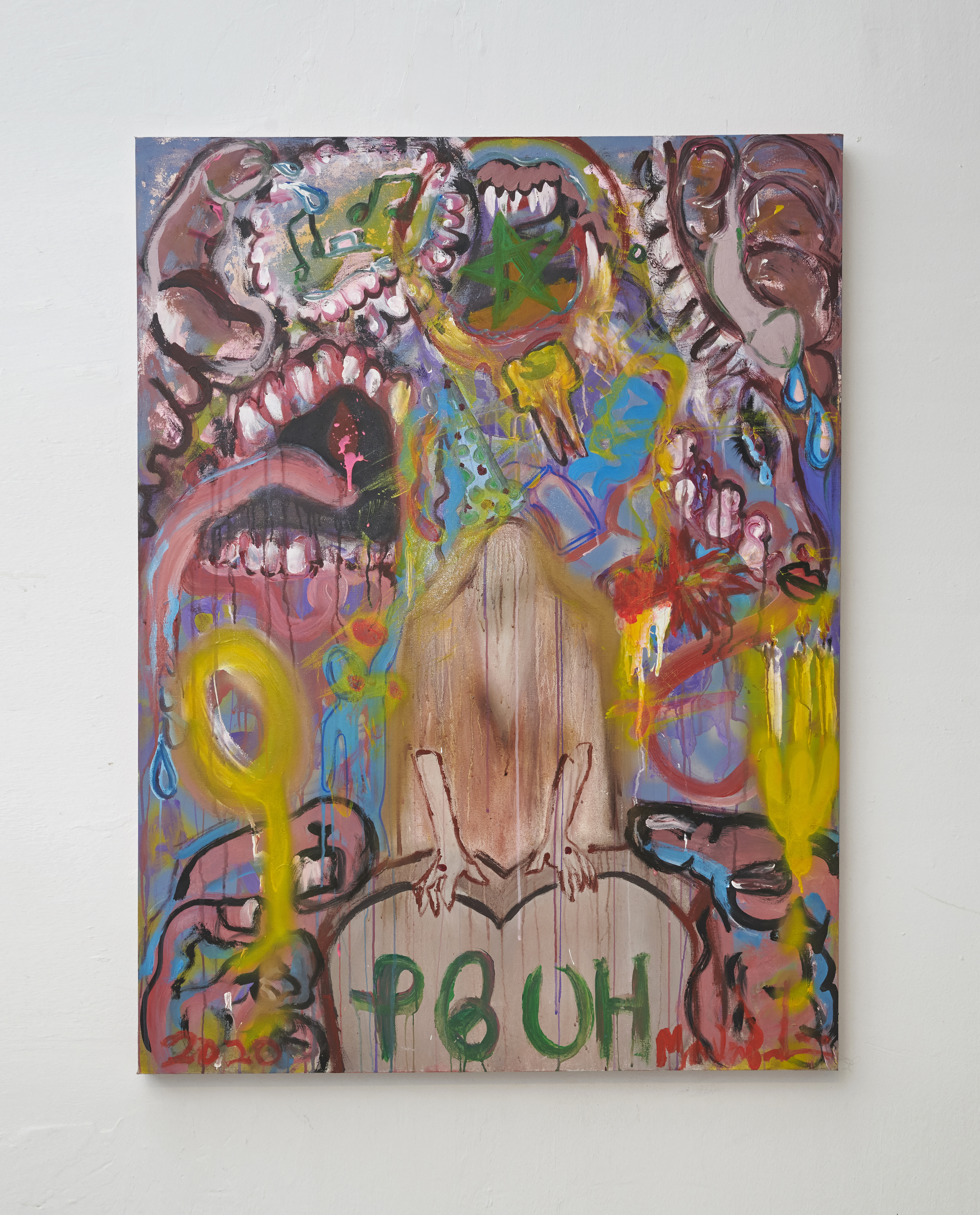
You’ve talked about how you’ve been painting and drawing since you were a child. Tell us about how the story of Marla began.
I got the name Marla from the movie, Fight Club.
Marla Singer is a character in Fight Club, and I was in a Fight Club production in 2007. Marla is a character in limbo. She exists yet doesn’t, and
despite that, functions as a constant for the two main protagonists in the
film. Marla came to me because I was dying as Bendini. It was so difficult to be Bendini, so I became Marla. People who do drag will tell you that their character or persona helps them to get through life, and it was the same for me. The only difference was that I became Marla Bendini 24/7. It came to a point where I didn’t know how to let go of Marla. I’ve harmed and hurt Marla many times, and I’ve had to make amends with that feminine part of myself. I was born Bendini, yet I made Marla fight all my battles. I didn’t know how to put her to rest. When I met artists such as Marylyn, nor, ila or Zarina, they really gave me permission to do just that. I’ve sat across friends such as Zarina, and there was one particular time where we were just at her place doing tarot readings. We looked at each other, and in that moment, there was a shared acknowledgement. We’ve done this together before, and that we’ve known each other for a long time. It’s so profound. It’s that acknowledgement of seeing myself and seeing them at the same time: the realisation that we’ve gone through this same thing before.
People who do drag will tell you that their character or persona helps them to get through life, and it was the same for me.
Along this journey, what have some of the most clarifying moments for you been, particularly in relation to identities and how they are formed?
Marla was really
important for me. Up until that point, I was still gender-fucking and calling
myself Bendini. I couldn’t find a name that really encompassed my feminine
side. There was, of course, a lot of internalised homophobia. I got teased a
lot for my name as a child. How does one come up with a name that suits them as a
person? In the course of doing that Fight Club production I mentioned earlier, I began
signing off as Marla. Ten years on, I was sitting in an Alcoholics Anonymous
support group and I introduced myself, “Hi I am Marla, and I am an addict”. I realised
that I had never stopped playing that character. It took a long time to become.
In a way, this was been my higher consciousness leading me along the way and
giving me the affirmation and space I needed. When I started telling the story of how I got
the name Marla, it became clear to me that it wasn’t just my story. You
have to become in order to be part of a bigger plan.I was brought up Buddhist, but I was agnostic for a long time. I just didn’t believe in any particular belief system. I didn’t understand the point of pain and suffering. Yet when I saw miracles happening, I started assigning significance to a higher being or higher power. It had to be the work of someone. I have a very questioning mind, and I started asking who did all of this. I later became a Christian. There was once I was busking and playing the hymn Amazing Grace. A Christian lady came by and started evangelising to me. She started telling me about God and asking me to attend her church. I kept telling her that the world was my church. I found God outside of a church. I found God despite all of these churches telling me about how sinful I was. She didn’t understand all of this. At some point in time, I realised that all of these higher beings are one. It is us humans that divide them up. At the end of the day, every religion preaches unconditional love.
I was admitted into the Institute of Mental Health (IMH) last year, and I knew I had to stop doing music for a while. I had to rest my ears. Whilst I was in the hospital, I started drawing again. I showed the sketches that I made whilst I was in hospital to Seelan Palay, and he said that he wanted to do a solo showcase for me. I had never done a solo painting exhibition before. In musical terms, the coda refers to going back to a certain point in the score. You’ll get to a particular point in the piece where you have to go back and repeat a phrase again. I told him that I was ready for the exhibition. When my first exhibition opened at Coda Culture last July, I was clean for the first time in many years. I had to face all of my pain without my painkillers. It wasn’t easy, because I had to work through the pain. But we always say: don’t give up before the miracle happens. Sometimes it’s hard to believe that when you’re in the middle of everything. For my recent exhibition at the new Coda Culture space, I told Seelan that I wanted to do it on April Fool’s Day. It has been a very trying nine months of going for therapy and doing my inner work healing, so I needed something to show for it. I desperately wanted to get out and to be with my people again. I wanted to do the things I was supposed to be doing again. If anyone else is going through the same thing, I want them to know that this is what happened to me and how I got through it. April Fools was the first solo exhibition I had that comprised of just paintings, and that was an incredibly clarifying moment for me. Prior to this, I was doing a lot of smaller drawings. Somebody pointed this out to me and asked me why I was so afraid of taking up space. For a long time, I took up a lot of space. My full name is really long. When I walked into a room, I made sure my presence was known. I just didn’t feel like I belonged, so I felt like I had to occupy space and stake my claim. I had been so afraid that I’d do that again. This exhibition became a chance for me to dream big and to go big. Whilst I was preparing for the exhibition, Seelan went to get all of my materials with me. It was all of this support — the holding of space, actual logistical help — that really helped.
⁵ Fugue State, Marla Bendini
2020
⁶ Wanker, Marla Bendini
2020
2020
⁶ Wanker, Marla Bendini
2020
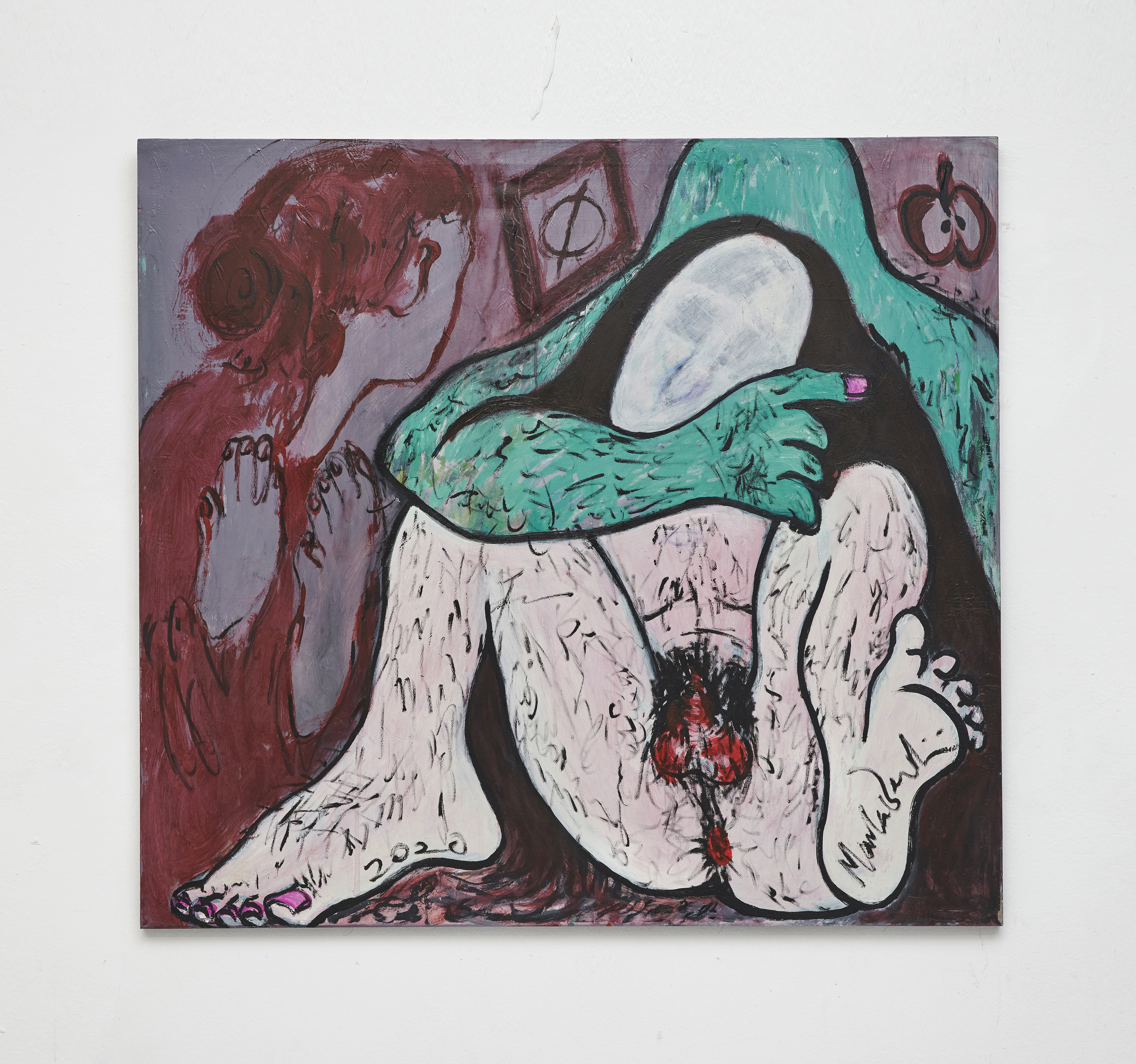
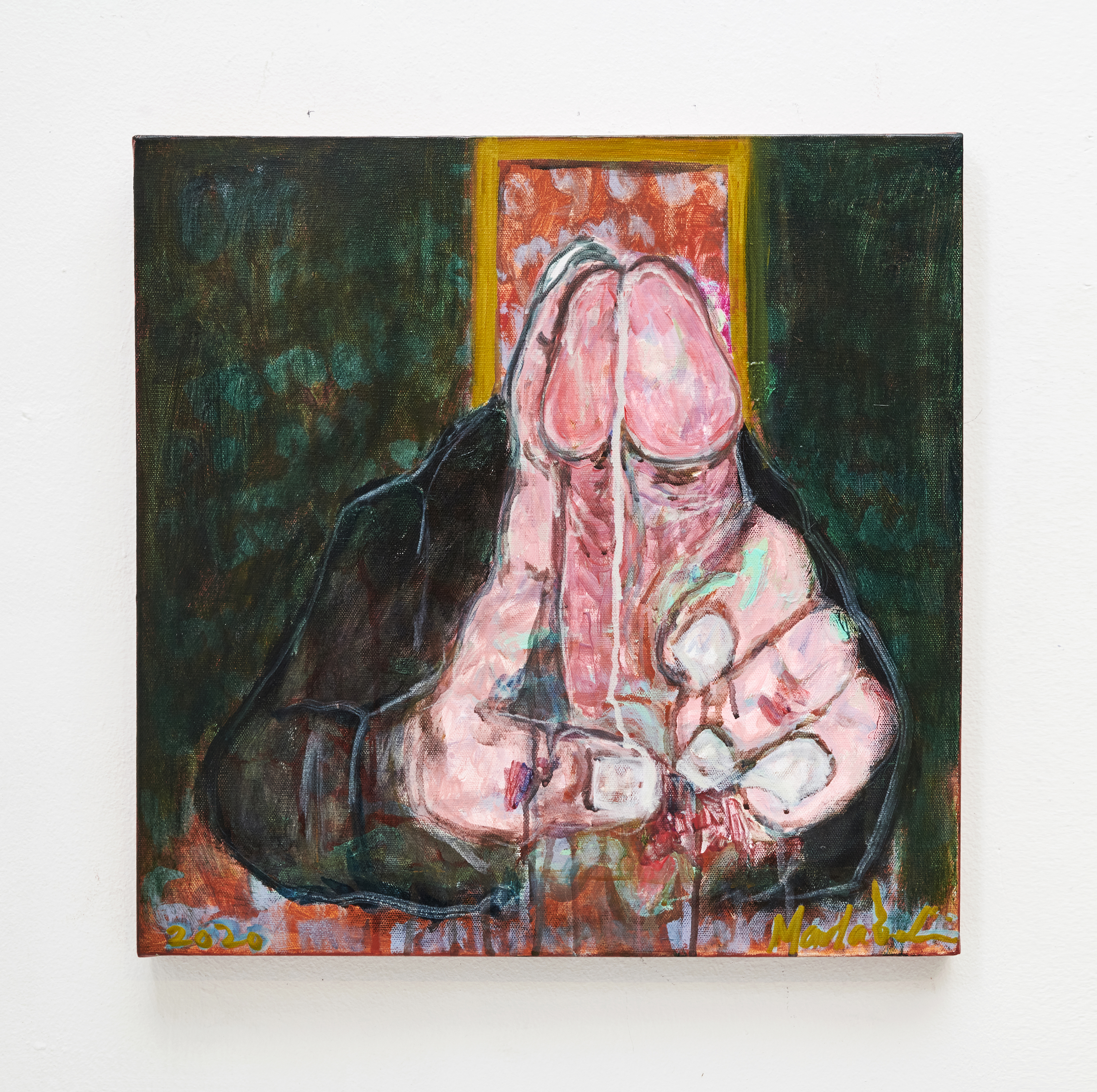
The way in which you work is quite impulsive, intuitive and almost stream-of-consciousness-like. In the process of you working on a piece of work — be it a painting, a performative piece, or something else — how do you know when you’re done with something and that a work is finished?
What does it mean
when we say that an artwork is done? Where does it go when it’s done? A lot of my
paintings are process-based. It’s like a scrapbook of sorts, and I’ll update
certain things along the way. It’s like divination. At the end of the day, it’s
about what you’re trying to look at or what you’re trying to find. You don’t
always have to complete a puzzle in order to know what the image is. I tend to work across a couple of pieces at the same time. I might piece one work on top of the other. I’m quite experimental that way. I also do a lot of automatic writing in order to free my subconscious mind. I just draw what I see on the page. I just trace them out. Of course, I enjoy doing observational or formal drawings as well. The drawings I make nowadays just tend towards the subconscious mind, and sometimes they tell me what I need to look into. I’ve learnt to give into chance, and I’m quite happy with the results. For me, it would’ve been otherwise impossible to come up with these compositions.
I just draw what I see on the page. I just trace them out.
As someone who puts herself out there with her work, how crucial is vulnerability to your work and are establishing boundaries with audiences important?
When I’m drawing or painting my figures, I can almost feel myself falling into the same pose. There’s a sensuality to it, and I think that’s how I approach it. Having said that, there have been works that I’ve held back on presenting. Sometimes, it comes down to whether it’s the right time or climate to exhibit or show a work. You have no control over that. At some point, I just have to let go. It’s difficult for me to say when a work is done or how I can draw boundaries for myself because the boundaries were always enforced onto me. I don’t really get to draw my own boundaries. Now, I’m learning to establish them better. It’s a two-way street, of course. I have to ask for certain things that I wouldn’t usually ask for, and I’m coming to a place where I’m realising that I’m allowed to have and make boundaries. That’s a huge step for me.
I’m used to crossing boundaries. When I’m invited for an exhibition or a performance, it is often because I am known for being transgressive. Knowing that, it can be quite hurtful when people invite me for exhibitions only to then tell me what I can or cannot do. I might not have planned to strip naked for a performance at all. Why do you have to tell me that nudity isn’t allowed here? Why am I associated with nudity in the first place? Have these people considered the fact that my body — naked or not — is a body that is contested? People just don’t see it that way, but at the end of the day, my nudity is different to your nudity.
⁷ 甜秘蜜 Secret Recipe, Marla Bendini
2020
⁸ Beach, Please..., Marla Bendini
2020
2020
⁸ Beach, Please..., Marla Bendini
2020


Your practice has been described as “[bridging] the present to what she envisions to be an inevitable trans/post-human condition”. Personally, what would you want this trans/post-human future to look like?
I’ve actually taken this description out of my current bio, but you’ve somehow managed to dig it out!
When we think of the trans-human or the post-human, we often think of this in relation to scientific or technological advancements. Scientific advancements, in turn, are often seen as being at odds with the spiritual realm. I’ve often been told that I’m ahead of my time, but when are you guys going to be ready for me? I’m still holding back on a lot of the things that I do. You almost have to do things in a way that the audiences of a particular time are able to understand and recognise. Your audiences need to have the capacity to experience your work. For example, we’ve always known that atoms existed, but it wasn’t until powerful lenses and microscopes were invented that we could see them.
As human beings, we’ve been trying to package and experience the intangible for a long time. What does it mean to have an experience? What does it mean to live? Part of my practice is concerned with questions such as these. When I included that description in my bio, I was very motivated. I wanted to create the future that I wanted to live in. I feel stuck sometimes. There are times where I feel like a time traveller that has been stuck in the past, and other times where I feel like I am an old soul.
That post-human future or reality isn’t all too far away. Every single moment that we live in is the pinnacle of our experience. I can’t be worse off than I was before, and I can’t be better. I’m only me now. Maybe I was so preoccupied with being a bridge then that I forgot to just be. I was trying to explain who Marla was, who Bendini was, and what my connection to the world was. I forgot to sit with myself in my practice. I’ve realised that I don’t have to be a vehicle all the time, so maybe I don’t have the full answer right now. Maybe we’re not in control, and this is going to play out over and over again in different forms. That’s something that excites and scares me at the same time.
Every single moment that we live in is the pinnacle of our experience. I can’t be worse off than I was before, and I can’t be better. I’m only me now.
